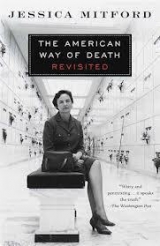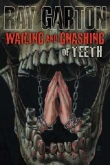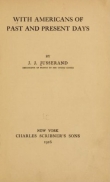
Текст книги "The American Way of Death Revisited"
Автор книги: Jessica Mitford
сообщить о нарушении
Текущая страница: 7 (всего у книги 23 страниц)
I thought I had reached a time of life at which I do not shock easily, but I realize now I had not fully plumbed the depths to which Mr. Treuhaft is capable of descending. I was shocked that an individual, who is sworn to act in the best interest of California, could be so wholly insensitive to the emotional state of bereaved families.
Anyone who wants to know how embalming is accomplished can easily find out simply by asking funeral directors. But the answer will be given in a tactful and diplomatic manner, and in consideration of the emotional state of the person making the inquiry. For anyone to assume that the same explanation could be given to everyone under any and all circumstances is to confess abysmal ignorance of the tender sensitivities of people in a state of bereavement.
There follows a call to action. There will be a hearing at the state capitol (date and address given) to vote on the proposal. “It is incumbent upon all funeral directors to take immediate action to protect the best interests of the bereaved public we are dedicated to serving.”
So the brethren rallied, and the lobbyists lobbied, and the proposal was defeated. Dead, yes, but destined to be reincarnated five years later in the Federal Trade Commission’s Funeral Rule.
The funeral folk soon had another opportunity to show their tender concern for the feelings of those in bereavement. When, in the early eighties, the outbreak of AIDS became a matter of public anxiety, there was panic on the part of funeral directors and embalmers for their own safety. Most mortuaries refused to accept cases where it was believed that the deceased had been exposed to the HIV virus; those that did accept AIDS victims refused to wash, dress, or embalm the victim.
The New York State Funeral Directors Association (NYSFDA), on June 17, 1983, advised members to institute a moratorium on the embalming of AIDS victims. Reaction was quick.
Peter Slocum, a spokesman for the State Department of Health, said that funeral directors had previously been advised to handle the bodies of victims of AIDS as they handle victims of hepatitis B—that is, to wear latex gloves, a procedure that had already been prescribed to prevent spread of any contagious disease and required for health care workers under all circumstances when working with dead bodies. “We have not seen anything that suggests that there needs to be any precautions beyond that.”
Governor Mario Cuomo introduced a bill in the state legislature which would make funeral directors liable to loss of license if they refused to embalm AIDS victims, saying, “We must not permit AIDS sufferers and their families to be subjected to irrational and unscientific behavior born out of fear, not fact.” One week later, the NYSFDA lifted its moratorium on embalming, and the bill died in committee.
This, however, is by no means the end of the story. It is now cash-in time. The mortuaries that did take AIDS cases began charging healthy “AIDS handling fees,” usually $200 to $500. Others used subcontractors to do the embalming, covertly adding the cost by inflating the basic service fee. When the problem began to reach crisis proportions in New York City, the Gay Men’s Health Crisis (GMHC), with the help of volunteers, surveyed the city’s five-hundred-odd licensed funeral homes to identify their AIDS policies. With that information in hand, it put together a guide recommending only forty-two of the five hundred mortuaries to the thousands of friends and relatives of people with AIDS.
The New York City Human Rights Commission got involved in the matter and, as reported in the Boston Phoenix(March 12, 1993), published GMHC’s list, which fanned public outrage. Loss of business and some successful damage actions helped produce a turnaround, and many mortuaries asked to be added to the referral list.
Elsewhere, however, the AIDS surcharge persisted in one form or another, despite its illegality under the Americans with Disabilities Act (ADA), which requires funeral homes to “provide their services on a non-discriminatory basis to persons who have had AIDS.” Since the government was doing nothing to ensure compliance, California assemblywoman Jackie Speier, prodded by the funeral and memorial societies, in 1992 introduced two antisurcharge measures in the state legislature. The leaders of the campaign—Ann Tompkins, president of the California-Hawaii Federation of Funeral and Memorial Societies, and Karen Leonard (dubbed by the Boston Globethe “scourge of the funeral industry”)—feeling that something was needed to waken the legislators from their lethargy, had Ann appear dressed in a “state-of-the-art” protective suit, the outfit that coroners wear when opening and dissecting bodies for autopsies… a far more invasive procedure than embalming. Ann then did her striptease, removing the entire “protective” outfit down to the latex gloves, while Karen explained that the gloves were the sum total of protection needed, or prescribed by OSHA (Occupational Safety and Health Administration), for handling supposedly diseased cadavers. Wholesale cost: two dollars per hundred pair.
Everyone enjoyed the performance except the funeral directors, who were there en masse. The bills passed and were signed into law, the first such legislation in the nation.
7. THE ALLIED INDUSTRIES
The undertaker, who pockets slightly more than half of the funeral dollar, has generally drawn the spotlight upon himself when the high cost of dying has come under scrutiny. But he is not the whole show. Behind the scenes, waiting for their cue, are the cemeteries, florists, monument makers, vault manufacturers. The casket-manufacturing companies, to whom the undertakers are perennially and heavily in debt, are often lurking in the wings like ambitious understudies waiting to move in and assume control of the funeral establishments should financial disaster strike.
The cast in this drama is not always one big happy family. There are the usual backstage displays of irritation, pique, jealousy, a certain vying and jockeying for position. There are lawsuits and scathing denunciations which arise because of the stiff competition. These can be submerged in the interests of a common endeavor, for the show must go on, and the common goal must be served: that of extracting the maximum admission fee from the paying audience.
The casket companies reported that the alarming condition of the industry’s accounts receivable was “far more aggravated in the casket field than in any other manufacturing endeavor.” Back in 1961, the funeral establishments owed the casket makers more than $39 million, 20 percent of the year’s production, an amount equal to about 317,000 caskets, of which, groaned the creditors, some 40 percent had “already been interred!” Presumably making repossession a most inconvenient remedy for the creditor.
The answer to this problem is, of course, to sell in ever-higher brackets. As Herbert L. Stein, vice president of the National Casket Company and president of the Casket Manufacturers Association, said, “Since the public’s purse limits funeral expenditures and nature limits the number of funerals… skillful merchandising of quality goods is about the only avenue for upping profits anywhere along the line.”
Selling the public on the “quality” of his merchandise can tax the ingenuity of the undertaker. The costliest caskets are those built of the thickest metal. The cheaper lines of metal caskets, constructed of thin sheet metal over a wooden frame, achieve the same look of massive elegance, and can hardly be distinguished (except by grateful pallbearers) from the heavyweights that weigh hundreds of pounds more and sell for thousands of dollars more. A writer in Mortuary Managementdescribed the average run of lightweight metal caskets as “nothing more or less than stovepipes. Stovepipe gauges are always misleading the public…. ‘Metal is metal,’ says John Public.”
The method hit upon by the casket makers to solve this knotty problem is essentially the method used by furniture manufacturers (whose direct descendants they are): that is, to make the cheaper lines so hideous that only customers who can afford the barest minimum will buy them. Mr. John Beck, then president of the Balanced Line Casket Company and of Elgin Associates, [5]5
Elgin is no more, nor is Merit; they along with many other manufacturers, have been swallowed up by the industry’s Big Three: Batesville, Aurora, and York. The number of casket manufacturers has plummeted from 520 in 1976 to fewer than 100 primary producers today.
[Закрыть]carefully explained the position:
In most cases where funeral directors are not showing enough profit, they are showing too many low price metal caskets that look too good, are embellished up entirely too much for their price position…. We call the items “profit robbers.” For right in the area where people do have the money to buy better funerals and will do so when given the proper selection and opportunity, the better sale is lost. The second area where opportunity is lost is in the sealer [6]6
A sealer is a casket with a gasket.
[Закрыть]area. If the lowest price sealer looks as good as the best one, of course most people will buy the lowest price one…. This is the region where greater profits can be made as this is the one where people who have the money to buy will do so if they are given the proper incentive.
And Mr. Leroy R. Derr, president of the Boyertown Casket Company:
We can make cheaper caskets, certainly. You can make them and so can I. However, each one helps underwrite the failure of our funeral directors. Too many “cheapies” will ruin the funeral directors completely.
So well did the anti-cheapie program succeed that sales of metal caskets soared. The significance of this industry-engineered change in funeral fashions lies in the circumstance that the wholesale cost of a metal “sealer” casket is today $350, while a cloth-covered softwood wholesales at about $160. Grained-hardwood caskets, which wholesale on an average for about as much as metal ones, have held their own over the years, accounting for about 15 percent of unit sales. The metals, however, which can be mass-produced more cheaply than the hardwoods, are the ones that are pushed most vigorously by the manufacturers.
Here again, what is good for one segment of the burial business has its odd and painful repercussions in another. So enthusiastically are metal caskets pushed that fairly often they are sold even in cases where the deceased is to be cremated. This is most irksome to the crematories, whose equipment—designed for the expeditious combustion of wood—is not geared to the combustion of metal receptacles.
One crematory operator told me how they solve the problem: the lightweight metal caskets are put into the retort, where they eventually buckle and partially melt. “The remains are actually baked,” he explained. The heavier and costlier grades cannot be disposed of in this way because they are likely to ruin the crematory equipment. The body is removed from this type of casket and cremated as is—which leaves the problem of disposing of the casket. “State law prohibits the reuse of them,” the crematory operator said. “You can’t very well take it out to the city dump, because what if the family should happen to pass by and see it there? So we have to break them up and scrap them.”
The significance to the consumer of wholesale casket costs lies in the use of “formula pricing,” which means in its simplest application that the price of the funeral is arrived at by marking up the wholesale casket cost anywhere from 400 to as much as 900 percent or higher. The markup is usually steepest in the lower price ranges.
Funeral directors have always been jealous guardians of the secrets of wholesale costs. The first official act of the California Undertakers and Funeral Directors Association at its founding convention in 1882 was the adoption of a resolution “that this Association earnestly request all manufacturers and wholesale dealers in undertakers’ goods… to refrain from sending out catalogues and price lists to any parties who are not undertakers or funeral directors in good standing.” Seventy years later, this concern was still uppermost; Mortuary Managementin 1952 reported, “The National Funeral Directors Association has for a number of years had a policy which states that all catalogues, catalogue sheets, and other advertisements which give wholesale prices for funeral merchandise, when mailed, should be sent in sealed envelopes as first class mail.” The same policy applies to funeral directors who mail price lists offering shipping services, embalming services, etc.
Over the years, the occasional hardy storefront casket retailer attempted to compete with the mortuaries in the sale of caskets. These efforts largely failed because the mortuaries resorted to various anticompetitive measures, among them the imposition of a “casket handling fee” when the casket was purchased from a third party. When in 1994 the FTC adopted a rule prohibiting the practice, retail casket sellers, offering substantial discounts, began to flourish. The media—fascinated by the trend—provided publicity, and consumers began to shop around.
Industry response was predictable. Gordon Fairclough in the Wall Street Journalinterviewed a funeral director in the neighborhood of one new casket emporium. The mortician reports that he met the competition by the simple expedient of lowering his casket prices while at the same time raising his service fees.
The conflict between cemetery and funeral director is of a different nature, for they are in direct competition for the dead man’s dollar. The funeral director is here in the choice position, since he ordinarily gets to the prospect first. By the time he gets through with him, there won’t be much money left over for a grave. The cemetery people come in a poor second, often finding that by the time their particular commodity is offered to the prospect, the funeral director has skimmed the cream from the top. He has not only induced the bereaved family to spend its all on the casket, but he may steer them away from direct contact with the cemetery and take it upon himself to order a cheap grave by telephone. This can all be very annoying and not at all good for grave sales.
The American Cemeteryreports a discussion on “immediate-need” selling in which suggestions were made about how the cemeteries can get around this problem. The first thing is to insist that the family make a personal visit to the cemetery and not permit the purchase of the grave to be handled through the funeral director. Mr. David E. Linge, executive vice president of Cedar Memorial Park, Cedar Rapids, Iowa, is quoted as saying: “We don’t feel a funeral director’s position is such that he can call a cemetery and say, ‘Open a thirty-five-dollar single [at least $350 today],’ any more than we would call him and say, ‘Provide the family with your hundred-dollar casket [$1,000 or more today].’ For that reason we will not take, under any circumstances, a sale over the telephone in an at-need situation.”
The funeral director should, however, be asked to supply as much information as possible about the family—“their names, relationship to the deceased, financial background, social and economic status in the community.” Once he has done so, the article continues, he can safely be dismissed while the arrangements proceed. At this time the funeral director is tactfully drawn away from the family group, since Mr. Linge feels that “as a matter of professional courtesy, he should not be present at the conference.”
The family visit also gives the cemetery personnel an opportunity “to describe its other services, such as bronze memorials, flowers, mausoleum crypts and cremation facilities.” If the family does not buy a memorial then and there, chances are they will do so in the very near future; for Cedar Memorial Park has a “carefully planned program to provide counsel and assistance for lot owners after the at-need sale has been made.” The program works like this: first a letter is sent to the family announcing that the Cedar Park memorial counselor and director of the Family Counseling Service will call upon them shortly “to secure the information necessary for the Historical Record and present you with a photographic record of the services at Cedar Memorial.” Three days later, the counselor arrives at the home and “suggests the purchase of a bronze memorial.” But that is not all; in the middle of the month following the service, the counselor is after the family again, this time to invite them to a “counseling program” at the cemetery chapel. This in turn is followed up by yet another personal visit; “Dr. Dill always visits them if a memorial has not been selected.”
Another cemetery writer describes the conflict of interest between undertaker and cemetery: “You are all familiar with the situation wherein the mortician gives a telephone order for your bare minimum, telling you to put it on his bill and not contact the family? He is trying to be a good fellow in the eyes of the family he is serving, but more than that, he is scared to death that if we see them, we’ll oversell them, and he will suffer in his sale or will have to wait for his money.” [7]7
Mortuary Managementstated editorially that it is the funeral director’s traditional prerogative to “get first whack at the family.” Concept: The Journal of Creative Ideas for Cemeterieswas quick to take issue with this statement, calling it a “shocking blunder” and adding, “Regardless of the truth in the statement, isn’t it improper to talk that way?”
[Закрыть]
The cemeteries are not taking it lying down. They have developed their own potent counterweapon—“pre-need” sales, for which salesmen roam the neighborhoods of metropolis and suburb like thieving schoolboys in an orchard, snatching the fruit before it has fallen from the tree. They have outflanked their adversary here by getting to the prospect not hours ahead—but probably yearsahead—of the undertaker. Worse yet, they have begun to establish their own mortuaries for the “one-stop” funeral.
Robert Waltrip of SCI, Ray Loewen of the Loewen Group, and Charles Stewart of Stewart Enterprises, the head honchos of the Big Three of the corporate funeral world, have been pitted in a worldwide race to buy up cemeteries with integrated undertaking establishments. Known in the trade as combos, these have proven to be prodigious money mills.
That such combinations may be illegal in states such as Pennsylvania, Wisconsin, Michigan, and New York, which acknowledge the traditional view that cemeteries are not meant to be for-profit enterprises, has thus far not been seen by the corporate buccaneers as a deterrent.
Louisiana-based Stewart recently negotiated an agreement with the Catholic archdiocese of Los Angeles, the nation’s largest (home to nearly 4 million Catholics), to build and operate mortuaries in its six biggest cemeteries. In return for this invaluable endorsement, the Church, to the anguished distress of the independent Catholic funeral directors in the diocese, will receive a percentage of the proceeds from each funeral Stewart performs at the cemeteries.
“Sinful,” Father Henry Wasielewski (whose crusade against funeral profiteers is addressed in chapter 14, “The Nosy Clergy”) calls the deal. “Most Stewart mortuaries charge thousands more than many independents for the same funeral.” It seems unlikely that Stewart, in its new role as purveyor of Catholic funerals in southern California, will share Father Henry’s view that a funeral is a sacred ritual that belongs in church. “It should be as simple as the white pall that covers a Catholic casket, signifying man’s equality and humility in death.”
Then there’s the touchy problem of who gets to sell the vault. Vaultmanship is very big these days; at least 60 percent of all Americans wind up in one of these stout rectangular metal or concrete containers, which may cost anywhere from several hundred to a few thousand dollars. Vault selling is ordinarily the prerogative of the funeral director, to whom the vault manufacturers address their message: “Think of your last ten clients. Think how many of that ten had the means and would actually have welcomed an opportunity to choose a finer vault. Makes sense, doesn’t it, to give them that opportunity? You’ll be surprised how many will choose this finer Clark Vault and be grateful to you for recommending it.”
Vault men, when they get together among themselves, can be a convivial and jolly lot, prone to their own kind of family jokes; the Wilbert Burial Vault Company, for instance, gives an annual picnic featuring barbecued chicken, ribs, and “vaultburgers.” This bonhomie does not extend to their relations with the cemetery people, whom they are constantly hauling into court. At one time, lawsuits were raging in various parts of the country, brought by vault manufacturers against the cemeteries, to enjoin the latter from going into the business of selling vaults. The theory is that the cemeteries, operating as nonprofit organizations, have no business selling things. The monument makers, too, have entered the fray with the same complaint, for the cemeteries have lately taken to banning the old-fashioned tombstones and selling their own bronze markers. They are slowly driving the monument makers out of business. In some cases, the monument makers have secured injunctions prohibiting the cemeteries from selling monuments, markers, or memorials of any kind. This is a cruel blow to the cemeteries, for they count heavily on the sale of bronze markers.
The cemeteries fight back by making things as rough as possible for both vault and monument companies. They may charge an arbitrary toll for use of their roads in connection with vault installations. They may require that all vaults be installed by cemetery personnel. They won’t permit monument makers to install the foundations for their Smiling Christs, Rocks of Ages, and other Items of Dignity, Strength, and Lasting Beauty; instead, they insist that these be installed by the cemetery, which sets a stiff fee for the service.
The backstage squabbling among the various branches of the funeral business has long been a matter of concern to some of the more farsighted industry leaders, who are understandably fearful that the customer will eventually catch on.
These leaders believe that, rather than engage in such unseemly quarrels over the customer’s dollar, they should instead concertedly strive to upgrade the standard of dying. A cemetery spokesman, decrying the friction between cemetery and undertaker, writes:
How simple it is to sell a product or an idea if we but believe in it. If we have the opportunity to foster the sentiment behind the funeral service, we must not fail to do so. Strengthen the idea behind the funeral customs, committals and the like. The family will receive additional mental satisfaction and comfort when the service is complete and in keeping with the deceased’s station in life; and from a strictly mercenary angle, it will pay big dividends in establishing the thought of perpetuity and memorialization in the mind of the family.
He acknowledges the funeral director’s pioneering role in conditioning the market:
Without question, the tremendous advancement in funeral customs in America must be credited to the funeral director and not to the demands of the public, not even ourselves. He has carried on assiduously an educational campaign which has resulted indirectly in a public desire for funeral sentiment and memorialization.
The lesson to be learned, then, is to promote harmony backstage for a smooth and profitable public performance. Another cemetery writer, reproving his fellow cemetery operators for their jealousy of “the success and dollar income of the funeral directors,” suggests one good way in which the cemetery men can effect a rapprochement with these rivals: “Have a yearly meeting with them. Feed them a good dinner, distribute a small token. Last year, we gave them all a set of cuff links made of granite from our mausoleum. Last but not least set up a memorial council. It won’t cure all ills, but I can assure you it will help. I believe it can control legislation….”
The memorial council idea actually originated in another quarter, with the flower industry, which had long been urging that industries that profit from funerals unite in common cause. As the president of the Society of American Florists said, “Funeral directors, as well as florists, are in danger of being swept away along with sentiment and tradition by those who do not realize the true value of the traditional American funeral practice…. Cooperation between florists and funeral director is essential as it is only one step from ‘no flowers’ to ‘no funeral.’”
The florists, whose language is often pretty flowery, convened the first meeting of the allied funeral industries under the alliterative designation “Symposium on Sentiment.” The announced purpose of the symposium was “to combat the forces which are attacking sentiment, memorialization and the rights of the individual in freedom of expression”—in blunter words, to combat the religious leaders and the memorial societies who advocate simpler, less expensive funerals. As the editor of the American Funeral Director, weightiest of the industry’s trade journals, put it, “The present movement is broad and sweeping. It threatens not only funeral directors, but the entire American concept of memorialization. This means that the supply men, cemeteries, florists, memorial dealers and everyone else dedicated to the care and memorialization of the dead have genuine cause for alarm.”
The sentimental gentlemen who rallied to the Symposium on Sentiment (they were in fact the only ones summoned) were an elite group, the top executives of the funeral industry’s major trade associations. The names of the associations describe their respective areas of concern: National Funeral Directors Association, National Selected Morticians, American Cemetery Association, National Association of Cemeteries, Florists Telegraph Delivery Association, Monument Builders of America, and Casket Manufacturers Association.
The symposium heard a “Statement on Memorialization” prepared by the florists, who had quite a lot to say about the Dignity of Man, the United States as champion of freedom and leader of the democratic nations of the world, the importance of the individual, the profound traditions of the centuries, and so on: “The final rites, memorial tributes, the hallowed pageant of the funeral service all speak for the dignity of man…. Memorialization is love. It records a love so strong, so happy, so enduring that it can never die. It is the recognition of the immortality of the human spirit, the rightful reverence earned by the good life. It is the final testimony to the dignity of man.” Just what else went on at the Symposium on Sentiment is a little hard to say, for those participants in the hallowed pageant of the funeral service who attended the meeting have not told us what was said. I asked Mr. Howard Raether, who represented the funeral directors, what sort of agreements were reached. “No agreements.” And are copies of the proceedings available? “No.” Which is a pity, because from what one can learn of the florists and their ways, the symposium must have been a most colorful meeting.
Funeral flowers accounted for 65 to 70 percent of the cut-flower industry’s revenue in 1960, and many funeral homes either had an ownership interest or a commission “arrangement” with the local florist. By 1970 the market share had dropped to 40 percent, and it has, according to trade sources, gone down steadily since then. By 1995 sales had further declined to 14 percent of what was now a $14 billion industry (up from $414 million in 1960). While the floral industry has no statistics on how many flower shops are owned by undertakers, one can assume that the “arrangement” (or a markup) continues to be a sideline source of income for the mortuary.
A current survey of newspaper death notices (and yes, Virginia, there is a trade publication called Obits and Pieces) confirms the rout of the “please omit” rubric. One-half to two-thirds of the notices contain requests such as “Donations to (charity) preferred.” As before, among the major dailies only the New York Timesand the Washington Postwill accept the proscribed words. The San Francisco Chroniclewill accept “in lieu of” in lieu of “please omit.”
What then was achieved by the florists’ huge advertising campaign and massive deployment of forces in the War of the Roses? Having won the battle and lost the war, whom can they blame for the distressing decline in sales of funeral flowers?
“Donations to… preferred,” a formulation devised by the florists themselves to curtail the use of “please omit,” must certainly have played a part. “Preferred to what?” is inescapably suggestive.
There are other culprits, of course—no doubt the major ones are the parallel decline of the “standard” open-casket funeral and the sixfold increase in cremations since 1960. These are developments which the florists, with all their resources, have been unable to influence.




![Книга Make Winning a Habit [с таблицами] автора Rick Page](http://itexts.net/files/books/110/no-cover.jpg)



